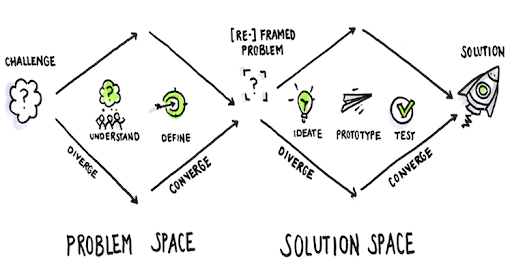Introducing Productboard Pulse. Exec-level insights into what your customers need, powered by AI.
Learn moreAgile development and UX design often find themselves at odds with one another. This is strange considering the fact that both have the same underlying goal: to build the best possible product.
Dual-track agile is an agile methodology that contains two separate tracks. There’s the “Discovery” track, and the “Delivery” track.
The discovery track focuses on producing, testing, and validating product ideas. The delivery track works on turning those ideas into an actual product. Dual-track agile provides a way of combining the goals of agile development and UX design. Both tracks operate in harmony and lead to excellent products.
Dual-track agile enables product teams to work on research and product development in parallel.
The first reference to dual-track agile goes back to 2005, a few years after the release and popularization of the Agile Manifesto.
Lynn Miller, who was the Director of User Interface Development at Alias, presented a paper. In it, she spoke about “interconnected parallel design and development tracks”. While Miller didn’t express her ideas as “dual-track agile,” it’s safe to say this was the first time such an idea existed in writing.
Two years later, Miller’s colleague, Desirée Sy, once again referenced the idea in a paper. Sy explained an approach that involved two tracks — one in design and one in development — that worked independently but in parallel.
Finally, in 2012, Marty Cagan and Jeff Patton spoke about “dual-track scrum”. This involved discovery and delivery tracks, where the outputs of discovery were the inputs of delivery. They reasoned that the discovery track would determine what to build, while the delivery track would determine how to build it.
Dual-track agile was born.
The whole purpose of agile development is to enable quick iterations on a product so that you can continuously provide value to your users. But even if you can build and ship new releases faster than any other product team, you still have large gaps between iterations. Dual-track agile enables you to close those gaps and fill them in with research and user-centered design.
Traditionally, product managers looked to user feedback as their primary input when it came to deciding what to build next. The issue is that user feedback can often be messy. Details may get lost or be incorrect. Users might not fully understand what they’re asking for. In fact, some users might not really know what they need.
Uncovering those insights takes a lot of time and effort, resources that busy product managers simply don’t have. As a result, product managers will often end up making assumptions. These assumptions can threaten the integrity of products.
Waiting to find out what users really want until you build software is expensive (software development requires a lot of resources), frustrating (a lot of work may end up being for nothing), and suboptimal (you work on features that don’t bring value).
That’s why you need a better way to make sense of user feedback, and to introduce product discovery.
Product discovery enables you to proactively research and prioritize the needs of your users. It also validates your ideas before you spend time building them.
Implementing a discovery cycle removes the need for assumptions. It ensures that you work on the best possible features for your product. This means you don’t waste resources on features your users don’t need. It means you can put all your time and effort into the right features.
Dual-track agile lets you balance both the discovery and delivery tracks. As the development team work on one set of improvements, your discovery team can start figuring out what the next set should be. It takes the guesswork out of product management.
Marty Cagan is a major proponent of the dual-track agile framework. He says, “our higher order objective is to validate our ideas the fastest, cheapest way possible”.
Dual-track agile is the solution to that objective.
As we’re sure you know by now, dual-track agile involves two tracks: discovery and delivery. Let’s take a look at how each one works.
Here at productboard, we spend a lot of time making sure we understand exactly what we should be building for our users. Our team uses a Double Diamond approach for conducting product discovery, structured as follows:

Identify the challenge
Re-frame the problem
Solution
By using this framework and following its steps, our team has built an environment of continuous learning that benefits both our teams and users, increased transparency into our entire product management process, and involved a diverse set of stakeholders. We hope you find as much value in it as we have.
See our step-by-step guide for conducting better product discovery.
The delivery track is what most people know as agile development. This track takes the learnings that the discovery track uncovered and applies them to the finished product. The aim of the delivery track is to build and release as many useful features and improvements as possible in a sprint.
Thanks to dual-track agile, this becomes far easier. The ideas are already validated, so the delivery team can simply focus their efforts on how best to implement the ideas. They can be confident that the features they’re working on are important to the users they’re building them for. In a lot of cases, they even have a detailed prototype to base their development on.
Ultimately, this makes building a product far easier and less resource-intensive.
. . .
Productboard is a product management system that enables teams to get the right products to market faster. Built on top of the Product Excellence framework, Productboard serves as the dedicated system of record for product managers and aligns everyone on the right features to build next. Access a free trial of Productboard today.
